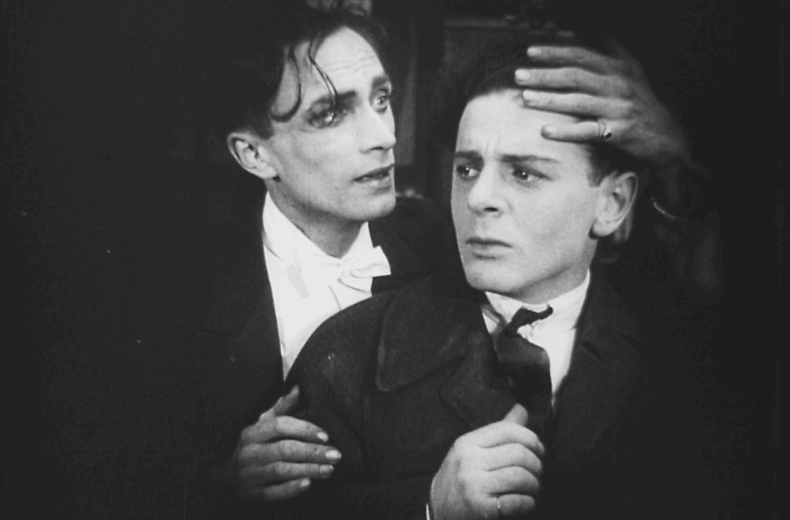Happy Pride month everyone! And in honour of Pride month, I’ve chosen queer cinema as this month’s deep dive. Specifically, the history of queer cinema. I’ve seen a lot of contemporary queer cinema, but I know next to nothing about the classics. And what I learned this past week was fascinating.
For example, did you know that the very first film with live recorded sound features two men dancing together? It only lasts 18 seconds, but considering it was shot in 1894, it is an extraordinary piece of cinema history. It also shocked audiences for its upending of gender conventions. Of course, many historians and critics argue that the men are just dancing and there’s nothing gay about it. Which… sure. But it is undeniably an incredible moment in the history of cinema that just so happens to feature same-sex imagery. So there’s that.
I then read about the wild west of the early days of cinema. I watched the first half of Manslaughter by Cecil B. DeMille and the infamous orgy scene that featured the first erotic same-sex kiss in cinema history. That’s right. You read that correctly. The orgy scene. Early Hollywood was WILD. I also discovered that the very first Best Picture winner at the Oscars ended with a kiss between the two male leads. Of course, the title cards wrote their relationship off as just a “friendship”, but I’ve certainly never held any of my friends like that.
I also watched the LGBTQ classic Anders als die Andern. Filmed in 1919 in Germany, this is the very first film to feature a sympathetic gay lead. Unfortunately, there’s only one copy left in existence and the print is missing multiple scenes, meaning we don’t have the full film. But you can still follow the story of two male musicians who fall in love and are then blackmailed because of their relationship.
The film was funded by Magnus Hirschfeld and his pioneering Institute of Sexual Science. And to say that Magnus Hirschfeld was a hero of early LGBTQ activism would be putting it mildly. He was one of the first advocates for both gay and transgender rights, and he repeatedly campaigned for sexual minorities. Over 100 years ago! He was eventually persecuted, beaten, and forced into exile for his outspoken stances on LGBTQ rights. His institute was sacked and the Nazis burned all of his works. Thankfully, however, a copy of Anders als die Andern survived.
There were so many extraordinary things about this film. For one, it was like watching the origin story of all the negative stereotypical gay tropes that have followed in the 100 years since. And yet the main character is 100% the hero and the sympathetic victim. The audience is supposed to root for him, as opposed to laugh at him like most early gay characters. Anders als die Andern also features the very first on-screen depiction of a gay bar. And it was fabulous.
Perhaps what was most disheartening about the film was that all of the points it’s trying to make, the pleas for tolerance and acceptance, would not be out of place on today’s screens. It’s sad to think about how far we’ve come and yet we’re still fighting the same battles.
Unfortunately, the wild west of early cinema didn’t last. The Hays Code was put in place in 1934, and until 1968, all depictions of homosexuality were explicitly banned on-screen. But that didn’t mean LGBTQ characters simply disappeared. Instead, they were coded into films in a myriad of inventive and subtle ways. And sometimes not so subtle. However, in thinking about this deep dive, I decided that I didn’t want to dig too deep into that part of the history of queer cinema. I don’t want to learn about coded characters. I want to learn about the history of explicitly queer characters on-screen. Which means I’ll probably have to jump ahead several decades to find my next film watch. But hopefully it won’t be too many.
See you next week!
Suggestions for artists I should check out? Please contact me with your ideas. I hope you enjoyed your daily helping of art!



